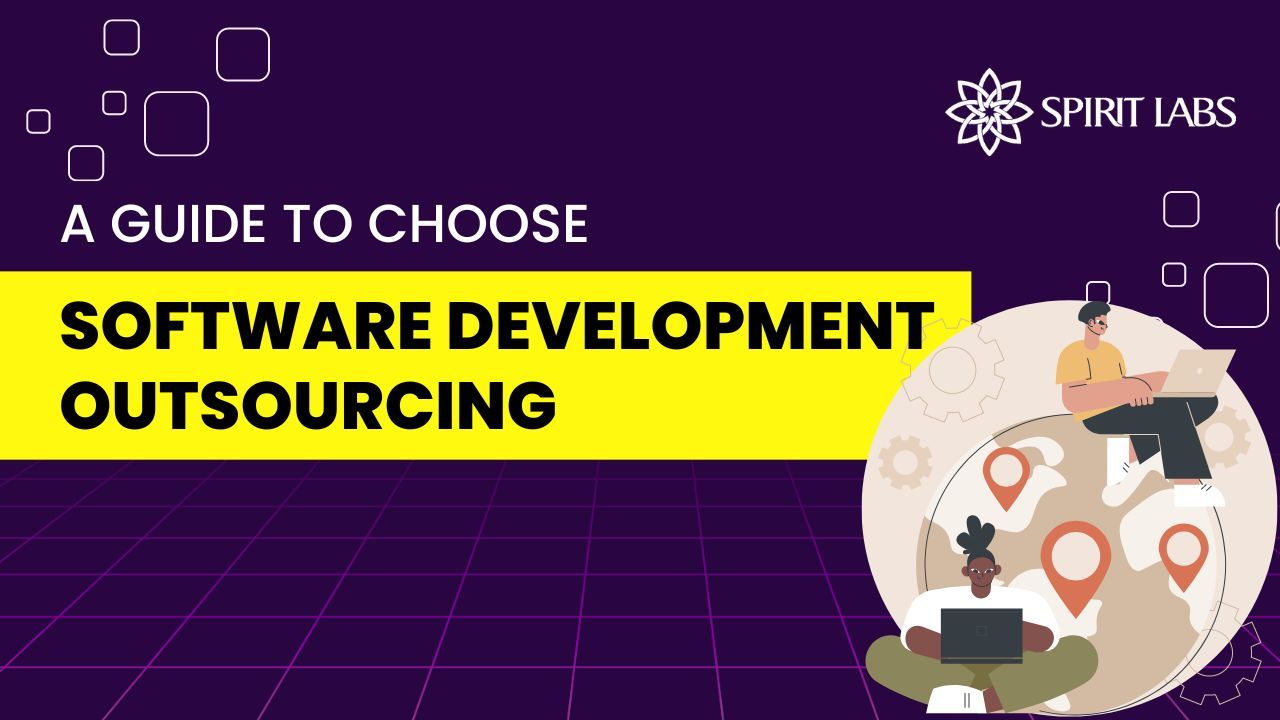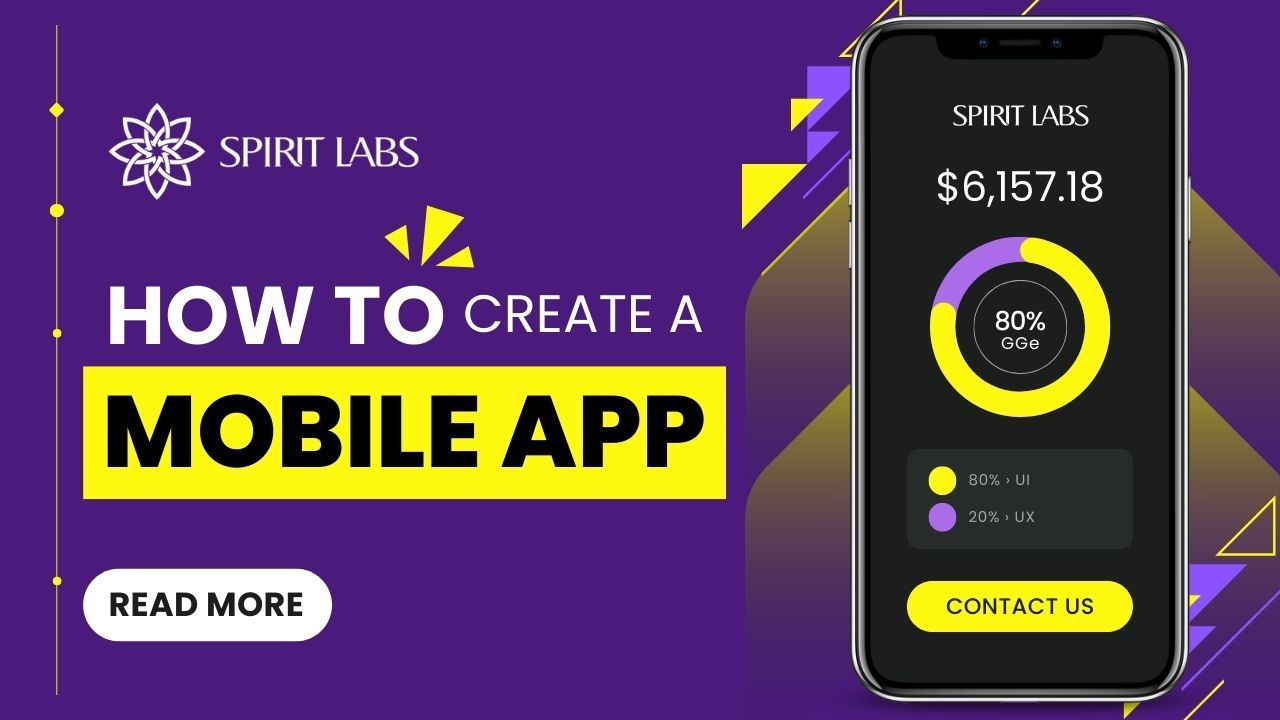
A Guide to Choose Software Development Outsourcing
Software Development Outsourcing is a dynamic industry that evolves with every following year responding to global events and business trends. Not unlike the previous year, 2021 has been in many ways defined by the pandemic and its impact upon the industries and businesses around the world. The growing role of the remote workforce and the increasing demand for cost-efficient software development are the main factors driving the IT outsourcing market throughout 2021. Without the need for renting office space, setting up an entire development infrastructure, and putting together a professional team, outsourcing is faster and more cost-effective than in-house development.
The Software Outsourcing Service is about the practice of a company handing over the control of a certain business process or project to a third-party vendor that is qualified and capable of handling the required business tasks.
Here are 6 reasons why you should outsource an IT Company for your project:
1. Reduce costs
Outsourcing is definitely less expensive than recruiting and building an in-house team of developers. It is always a more cost-effective option when compared with the long-term costs of recruiting, developing and maintaining your own in-house team of experts, there are always unexpected costs occurred such as: Hiring and rehiring costs, onboarding costs, training costs…
Every organization benefits from reducing its costs: this frees up more funds to channel into other areas of the business (personnel, hardware & software upgrades, office expansions, increased salaries, etc.).
2. Save time on hiring specialists
Hiring new software developers involves a number of steps, and more importantly, any developers you hire on a full-time basis must have a broad range of skills and be suited to different projects your business plans to undertake in the future. That makes the hiring system even more complicated and time-consuming, and you can even hire the unsuitable ones making the process take more time than expected. Plus, any training that’s required incurs more delays and costs.
But when outsourcing development to external teams, it’s far simpler. You don’t have to worry about finding developers with a diverse skill set for years of projects. You need to focus on picking specialists with the capabilities suited to the project at hand.
3. Increase Flexibility Of Scaling Your Project
Another benefit is the simplicity of scaling. When projects require a little extra expertise or more resources, additional work can be outsourced to one or more vendors. Companies have the flexibility to respond to changes as they occur and take action to address them with a fast turnaround.
4. Access Global expertises
When deciding to outsource your product development, you are not limited by your geographical location. Your primary criteria can be the team’s skills and professionalism, not whether they happen to be near your worksite. There are many talented developers in the world that you can approach and partner with. It even gives you the chance to broaden your knowledge and connections.
5. Access deep knowledge and experience
Depending on your product type, project specifics, and budget, you can proceed to development or you can start by creating a minimum viable product (MVP) to validate your idea and make initial changes as necessary. In this case, the marketing and design experts of the outsourcing company will help you design the most optimal MVP and then interpret the analytical data it yields.
Project planning, cost estimation, wireframing, UI/UX design, software development — outsourcing companies can do it all. And they do it all, all the time. That’s why they can put together the most optimal project plan for any project.
Working with a remote development team opens up new opportunities as companies are exposed to a range of new, emerging, and disruptive technologies such as Blockchain, Artificial Intelligence, and more which helps transfer the knowledge base and best-practice to internal teams effectively.
6. Focus on what matters
Software outsourcing for intellectual capital is another reason to outsource that can save years, tons of money, and a lot of headaches on many projects. You’re partnering with someone who has already done what you want to do. In customizing it for your business, they are supplying the technical expertise and you are supplying the business expertise. The two must work together in order for the software you need to fulfill your objectives. This keeps your specialists focused on the work they love and do best while also increasing their technical knowledge.
However, there are communication restrictions sometimes. With a group of people working remotely, communication will take place through email and other online tools, which are . Additionally, there is the problem of time zones, your team may be located so far away that sometimes the working hours between two parties will not fit with each other. However, these problems are not a big deal if two parties can come to an agreement of work hours before getting started.
Besides, you have to research carefully and properly about the company you’re about to accompany so as to reduce risk of data theft and unreliable company.
There are 4 main/common types of outsourcing services as below:
If you pursue this model, it means that the developers (or designers, testers) work from the vendor’s office and are the vendor’s full-time employees.
They work on the client’s tasks. The client “rents” specialists part-time or for hourly-based assistance.
The vendor provides all the working conditions for staff, including the office space, equipment (hardware and software), and all the office perks.
The vendor also bears all the development-associated risks (e.g., delays, bottlenecks, lack of staff, poor quality of product).
Developers and teams can work on several projects at the same time. The model suits both long-term and short-term projects.
IT staffing, or outstaffing, is a software development outsourcing model presupposing hiring developers from scratch, on the client’s demand and in line with their individual requirements.
The vendor doesn’t interfere with the development process, only providing the office space and equipment for the client’s developers.
A dedicated team is usually compiled from the existing staff the vendor possesses based on the client’s specific project requirements. The team works exclusively on the client’s project 8 hours a day, 5 days a week, and is managed either by a Project Manager or by the client directly.
The model suits long-term projects the best.
This outsourcing model is ideal for those who need some temporary workers to assist the client’s in-house team during the high season or to replace an in-house employee who left for some reason. It presupposes allocating coders from the vendor’s staff, ideally fitting the short-term development projects or tasks.
Deciding to outsource your company’s IT projects depends on several factors: you have to consider the costs, decide whether the geographical proximity (or lack thereof) is crucial for you, and finally, find an outsourcing partner that meets your criteria. Not sure how to select an ideal IT outsourcing partner for you? Here’s our guide to finding the right software vendor.
While budget concerns are no longer the only motivation for IT outsourcing, they’re still important. The differences between countries in terms of software development costs can be so huge that it makes a break in the evaluation process. For example, CIO magazine suggests that outsourcing to Vietnam is about 90% cheaper than developing software in the United States of America. Compared to India, developing software in Vietnam costs between one third and one-seventh times cheaper
You can hardly start a project and think it will be successful if you don’t know what your goals are. It is very important to be clear with this and to communicate these goals first internally, within your own company, then externally, with the outsource software development provider you choose to hire.
As we have mentioned above, there are 4 main Outsourcing models that you should consider when outsourcing. It may give you some analysis that helps you gain a stronger grasp of how different types of outsourcing models really work, so you can accurately assess which model is the right fit for your company’s needs.
Finding a potential vendor will involve a lot of hard work. That being said, your preparation of creating a criteria for suitability will help save a lot of time.
The next step you should take is to research specific countries that have a good outsourcing culture. Vietnam is one of the best choices when speaking of Outsourcing IT Companies due to the sustainable economic growth, the high quality with low-cost labors and the effective policy. Pay particular note to how much do software developers charge in those countries per hour and the time difference between where your company is and where the agency or developer is located to ensure smooth communication.
You should make a list of around 4 or 5 that you think meet your requirements on a quick glance. Then, do even more thorough research of each of the ones you select and see their portfolios, past projects, customer reviews and referrals.
It’s also a good idea to contact any of their past clients and inquire about their relationship with the software outsourcing company you are vetting. Ask them about their experience with that company, were they satisfied with the work provided and if they would work with them in the future. If they say “yes” to all, you can proceed to the next step with ease of mind.
Evaluate what matters
When you have narrowed down 4–5 companies which you thought were suitable for your project, take a deep research about these potential companies.
It’s useful to get a thorough understanding of the expertise and ownership of the company, as well as of the management team. After all, the values and experiences of the founders radiate throughout the whole business year after year.
The best way to see if a partnership can work out between the two parties is to find out for yourself. Visit the premises of the shortlisted providers and meet with the teams. You may also potentially attend a few of the meetings to understand how things are working, and how they could work on your project. This will also give you a good grasp of the capabilities of the entire team across the various roles that are needed for the project to run successfully (i.e., developers, testers, project managers, maybe UI/UX designers and architects too).
Speaking of clients, don’t hesitate to ask for testimonials or even references from previous or current clients that have a potentially similar setup as the one you’d like to work with. In addition to providing feedback about their working relationship with the provider, these current customers may also be able to offer useful tips for the initial weeks of collaboration and even some valuable advice for the long-term.
Evaluate the capabilities
It is essential to find out whether the technical capabilities of the outsourcing company match your needs. Before you can do that though, make sure you also have a good understanding of your own needs, strengths, and weaknesses. Only then will you be able to see whether the company is a good fit and can help you raise the bar in becoming even more efficient. Here are the specific capabilities to look into:
- Operational Maturity: While evaluating a provider, getting a good sense of the size and organizational structure of the company matters. The company should be at a scale where the management cares about the business you will bring them, or inversely, that the project is not too big for them to handle.
- Depth of Services: Having an in-depth understanding of the entire suite of services the potential provider is offering is also vital, as they might be able to provide unsuspected additional services that can be real game changers.
- Skills and Technologies: The advantage of working with a sizable partner is that they not only provide the developers you need on a full-time and long-term basis to complement your team, but also potentially help you with additional skills you may need on an ad-hoc basis, or people your organization can rely on for advice. If they already have a team with specific skill sets or technologies that may also prove useful to you, you can leverage these to achieve faster, more efficient delivery. It’s therefore advantageous to have a good grasp of the skills your firm has in-house and those in the areas you may need soon.
- Availability, flexibility, and speed: Often, by the time you begin looking for an outsourced team, the internal pressure has actually been building up for some time already. To get started as soon as possible, you need to understand how the potential partner can assist you in the short and medium term with the required resources by asking about the pipeline and the timeline to scale your team.
Understand their company culture
The company culture and values are probably two of the most critical indicators to see if you feel at ease working with one or the other provider. One good indication that should also give you an idea of how a company is run is how much the management trusts its employees. That is, whether they allow you to speak directly and freely with them in interviews without the necessity of a manager at all times. This shows a lot about the company’s transparency as well.
Assess processes and tools
A good understanding of your processes is as important as understanding how your potential partner works. A few of the critical processes to understand are the following:
- Approach a project: Understanding how the provider approaches a new project will equip you with key insights on how you can prepare yourself for that transition as well. Some adjustments will have to be made in the way you have been working so far when you make the move to an outsourced model. It’s an excellent opportunity to review your own processes and improve efficiency in some areas.
- Hiring process: Get your potential provider to explain their hiring process, and how they select the best possible candidate for each project.
- Onboarding: The onboarding process should encompass a review of the processes, reporting, expectations, standards, and all other elements that fall into the project.
- Team composition and dynamic: A vendor could also take it a step further and give you their assessment of your strengths and weaknesses and explain how their team will be structured to support your organization.
- Ability to scale up and down: Make sure you understand the timelines to scale up or down a team.
- Reporting and hours logging: An ideal provider partner should have a comprehensive reporting process to monitor progress and display transparency about what the team is doing at any given time.
Review legal and security aspects
It’s imperative that you deliberately prioritize your initial discussions, so you understand the terms of the prospective agreement before going too deep into negotiations for your project or product needs. You should also ensure that the provider upholds security standards that are on par with or better than what your business or industry is subject to. When it comes to security, priority should be given to the safety of the premises and the protection of the IP and source code.
Now you have the overview of how to research IT Companies. After doing deep research about vendors, you should decide to collaborate with the one that suits your company the most. Checking the staff is absolutely normal if you want to make sure that your project will be done by adequately skilled professionals. But don’t forget that a test task shouldn’t take months to complete; it should be short and concise, with clearly estimated results and deadlines.
It’s critical to dedicate the first couple of days to your acquaintance with the team. Here are some ways of setting up positive working relationships:
- Give the staff access to systems they’ll need
- Tell the team about the company, its internal culture, and rules
- Set a clear schedule of conversations
- Inform the team about the management pipeline
- Choose communication channels — email, messengers, etc.
- Don’t forget that you’re working with people — organize a water cooler chat
- If that’s relevant, make the team acquainted with other members of your in-house team — your assistant, managers, etc.
Remote work essentially has little difference from office work if you set up a convenient schedule for the team, choose practical task management systems, and invest in regular, healthy communication. If you like the way your team works and you want it to take more initiative — praise the workers and encourage them. If you don’t like something, also voice that. The longer it takes to give negative feedback, the harder it will be for the team to redo the work, which is time-, money-, and resource-consuming. Thus, it’s critical to react to everything on time.
As you can see, outsourcing is quite popular with companies from small to large resorting to this hiring approach for many reasons. Concerns about remote workers, the quality of performance, and the intactness of sensitive data will persist in this area, but if you’re ready to take the risks for the sake of accessing the global talent pool, we recommend taking some precautions.
Sign NDAs with both the vendor and the developers; conduct thorough research about the outsourcing vendor and check its reputation before signing a contract; make a personal acquaintance with the manager; mind the cultural barriers, language and culture issues, and time zones.
The software development outsourcing process will go much smoother if you have an in-house specialist with experience in remote team management; the rest will follow.
REFERENCES:
- Blog: A-Z Guide To Software Development Outsourcing
- Blog: The Ultimate Guide to Picking Your Software Development Outsourcing Partner in 2021
- Blog: Why Do Companies Outsource Software Development?


